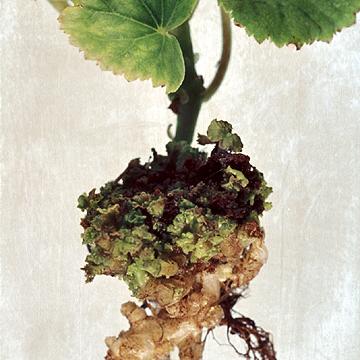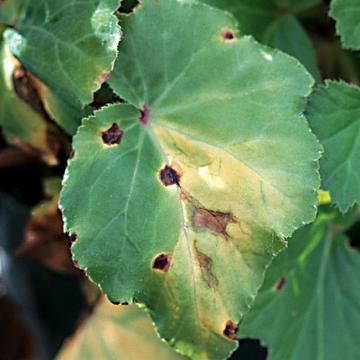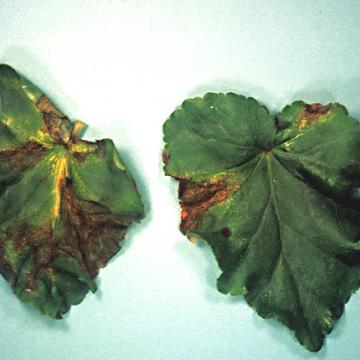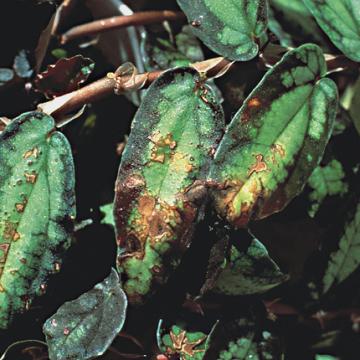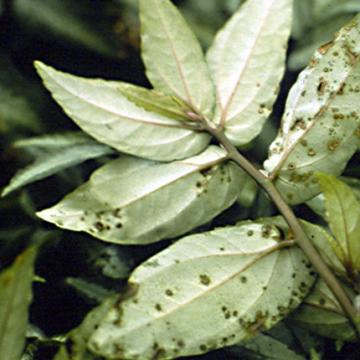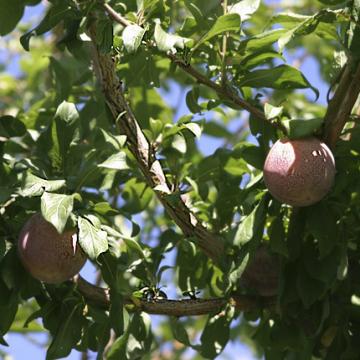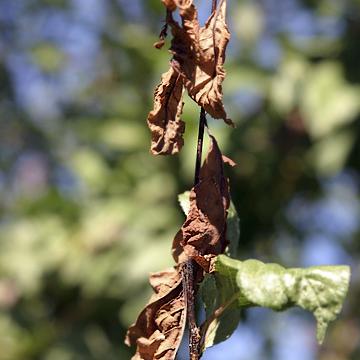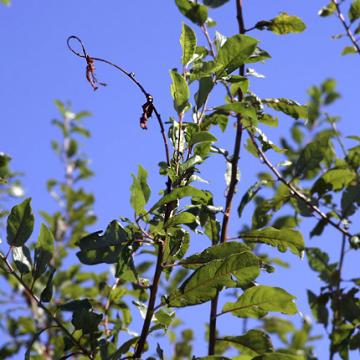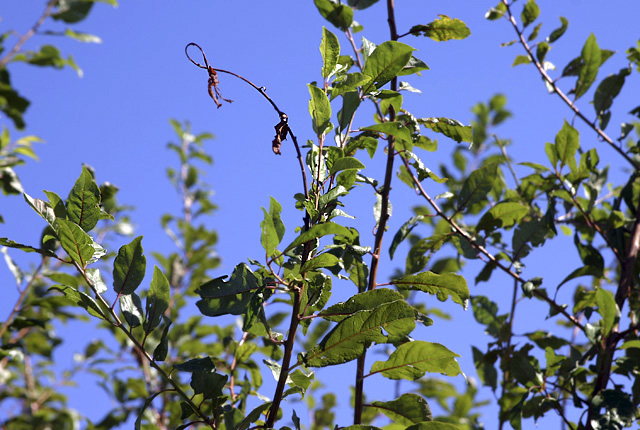DISEASE: Bacterial fasciation (Leafy gall)
HOST: Begonia
Leafy gall on stem.
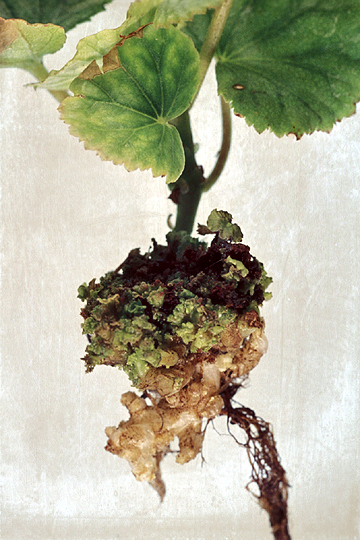
Bacterial fasciation (Leafy gall) | Begonia
DISEASE: Bacterial fasciation (Leafy gall)
HOST: Begonia (Begonia sp.)
PATHOGEN: Rhodococcus fascians
SOURCE: M. Geesteranus, J. van der Wolf
DISEASE: Bacterial leaf spot (Blight)
HOST: Begonia
Initial symptoms appear as small, blisterlike lesions. As lesions age, they enlarge, producing broad patches of necrotic leaf tissue.
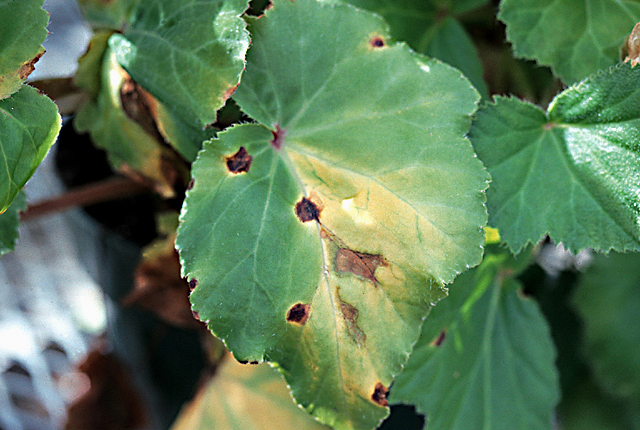
Bacterial leaf spot (Blight) | Begonia
DISEASE: Bacterial leaf spot (Blight)
HOST: Begonia (Begonia sp.)
PATHOGEN: Xanthomonas axonopodis pv. begoniae
PATHOGEN SYNONYM: Xanthomonas campestris pv. begoniae
SOURCE: APS
DISEASE: Bacterial leaf spot (Blight)
HOST: Begonia
Advanced stage of disease with dark, large necrotic areas on leaves and interveinal chlorosis.
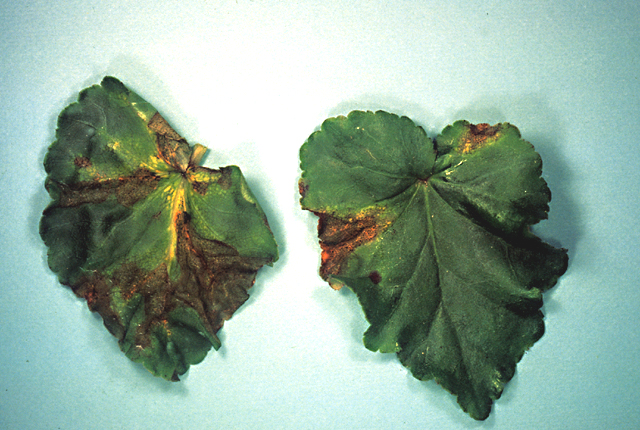
Bacterial leaf spot (Blight) | Begonia
DISEASE: Bacterial leaf spot (Blight)
HOST: Begonia (Begonia sp.)
PATHOGEN: Xanthomonas axonopodis pv. begoniae
PATHOGEN SYNONYM: Xanthomonas campestris pv. begoniae
SOURCE: APS
DISEASE: Bacterial leaf spot
HOST: Pellionia
Leaves with dry, irregularly shaped lesions with corky, raised borders on upper surface.
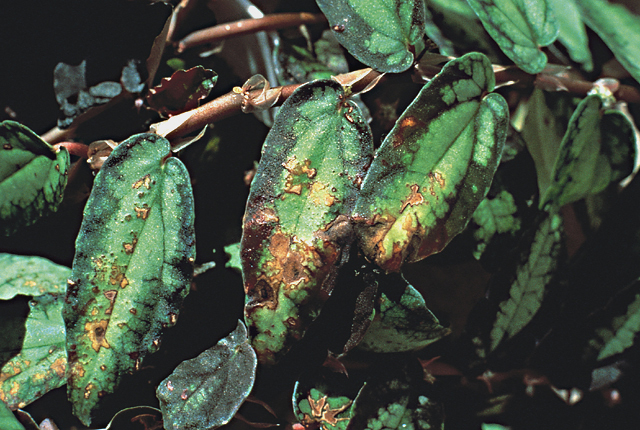
Bacterial leaf spot | Pellionia
DISEASE: Bacterial leaf spot
HOST: Pellionia (Pellionia sp.)
PATHOGEN: Xanthomonas campestris
SOURCE: A. Chase
DISEASE: Bacterial leaf spot
HOST: Pellionia
Leaf lesions are irregular, corky, and slightly raised on lower leaf surfaces. Lesions may fall out, leaving a shot-hole appearance.
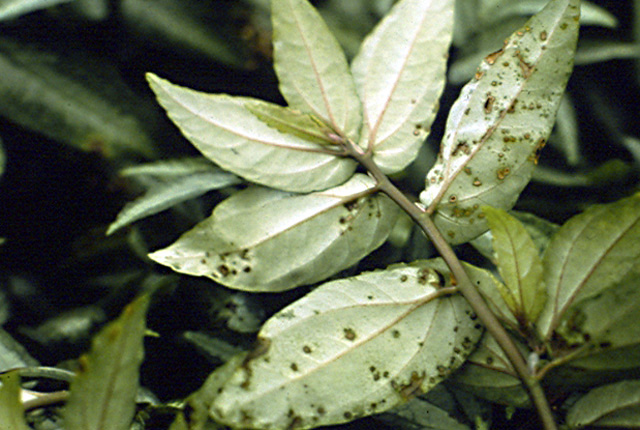
Bacterial leaf spot | Pellionia
DISEASE: Bacterial leaf spot
HOST: Pellionia (Pellionia sp.)
PATHOGEN: Xanthomonas campestris
SOURCE: H. Schwartz
DISEASE: Fire blight
HOST: Pluot
Fire blight cankers on major limb. Pluot is an interspecific hybrid of plum and apricot.
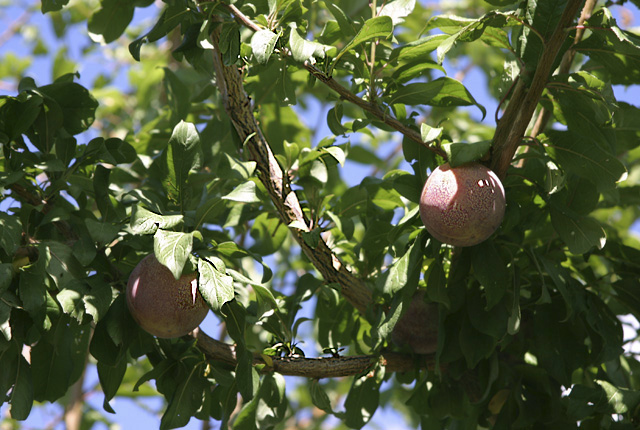
Fire blight | Pluot
DISEASE: Fire blight
HOST: Pluot (Prunus hybrid 'Dandy Dapple')
PATHOGEN: Erwinia amylovora
SOURCE: S. Mohan
DISEASE: Fire blight
HOST: Pluot
Dead shoot, the result of systemic infection.
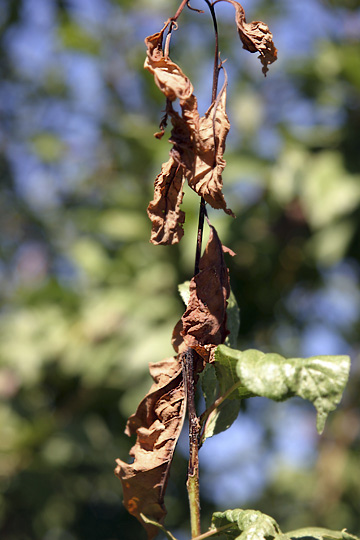
Fire blight | Pluot
DISEASE: Fire blight
HOST: Pluot (Prunus hybrid 'Dandy Dapple')
PATHOGEN: Erwinia amylovora
SOURCE: S. Mohan


